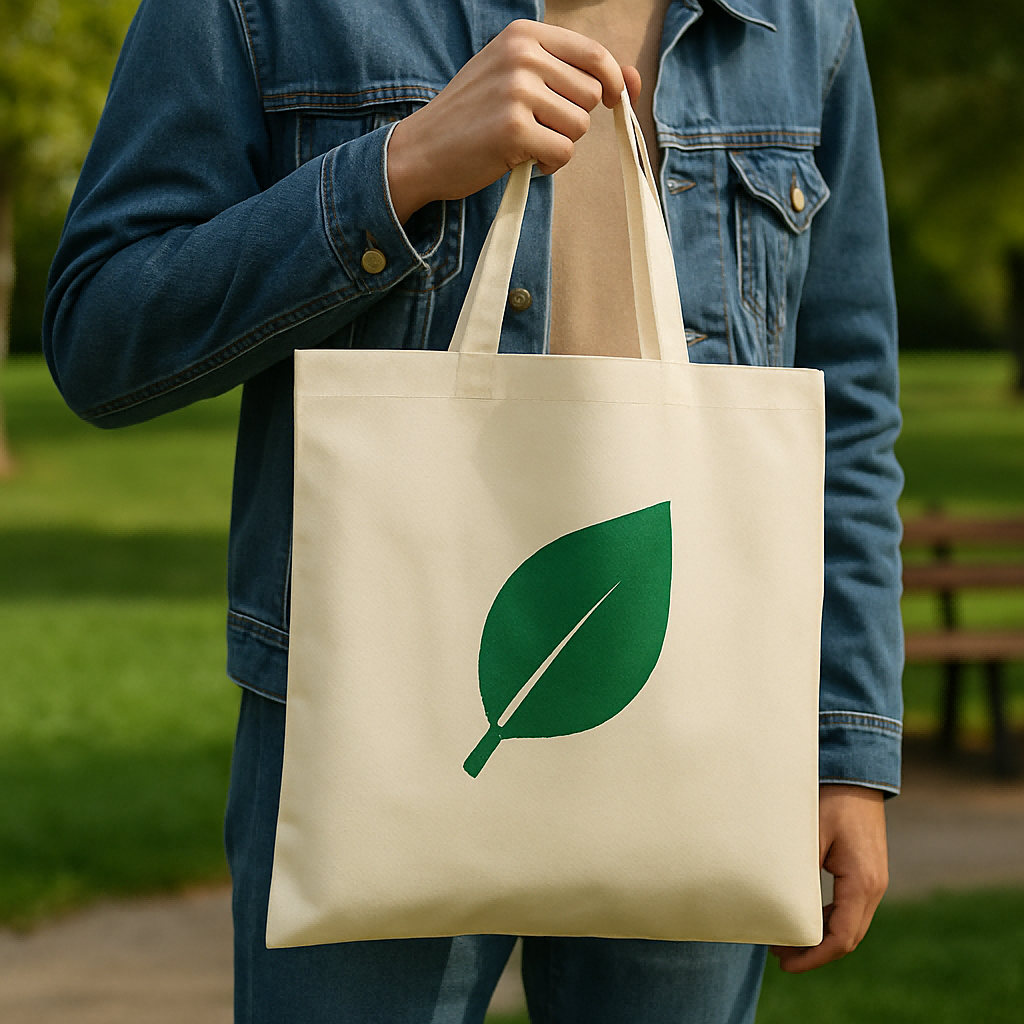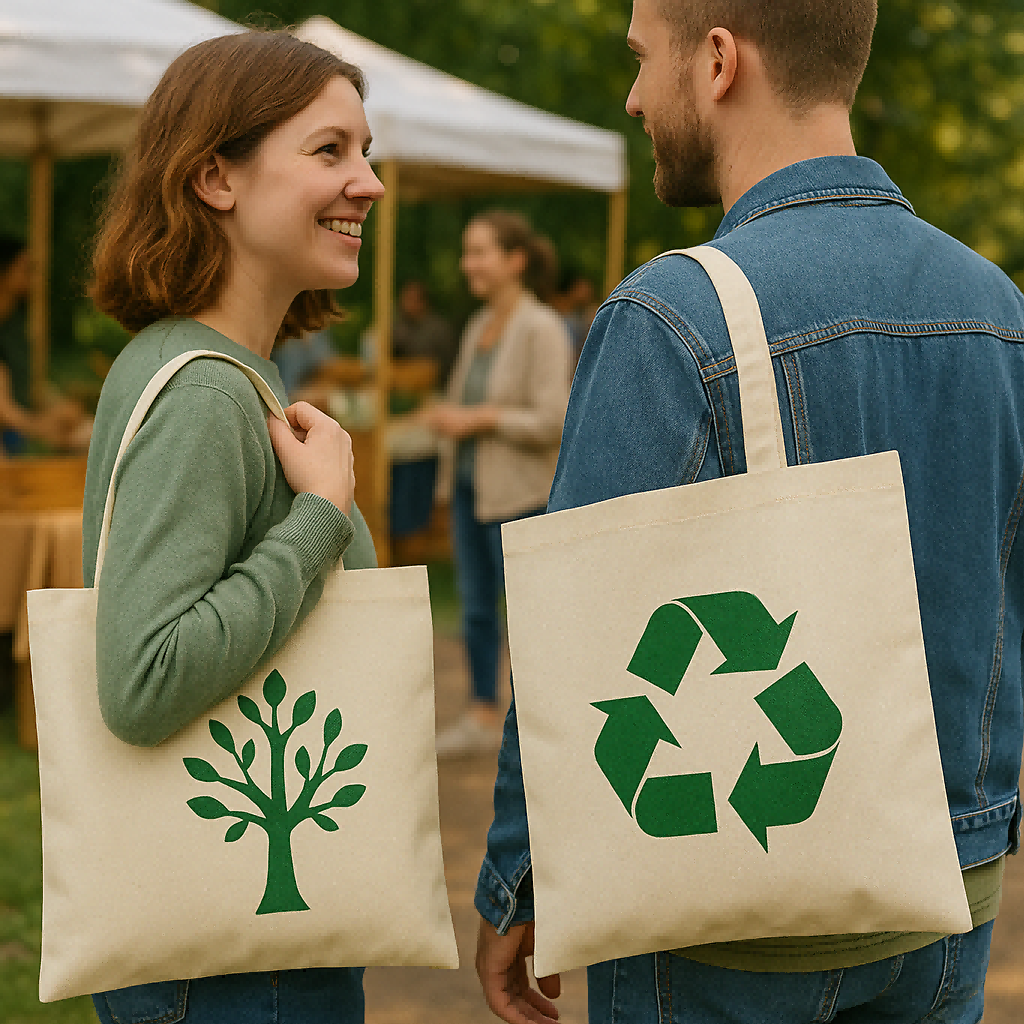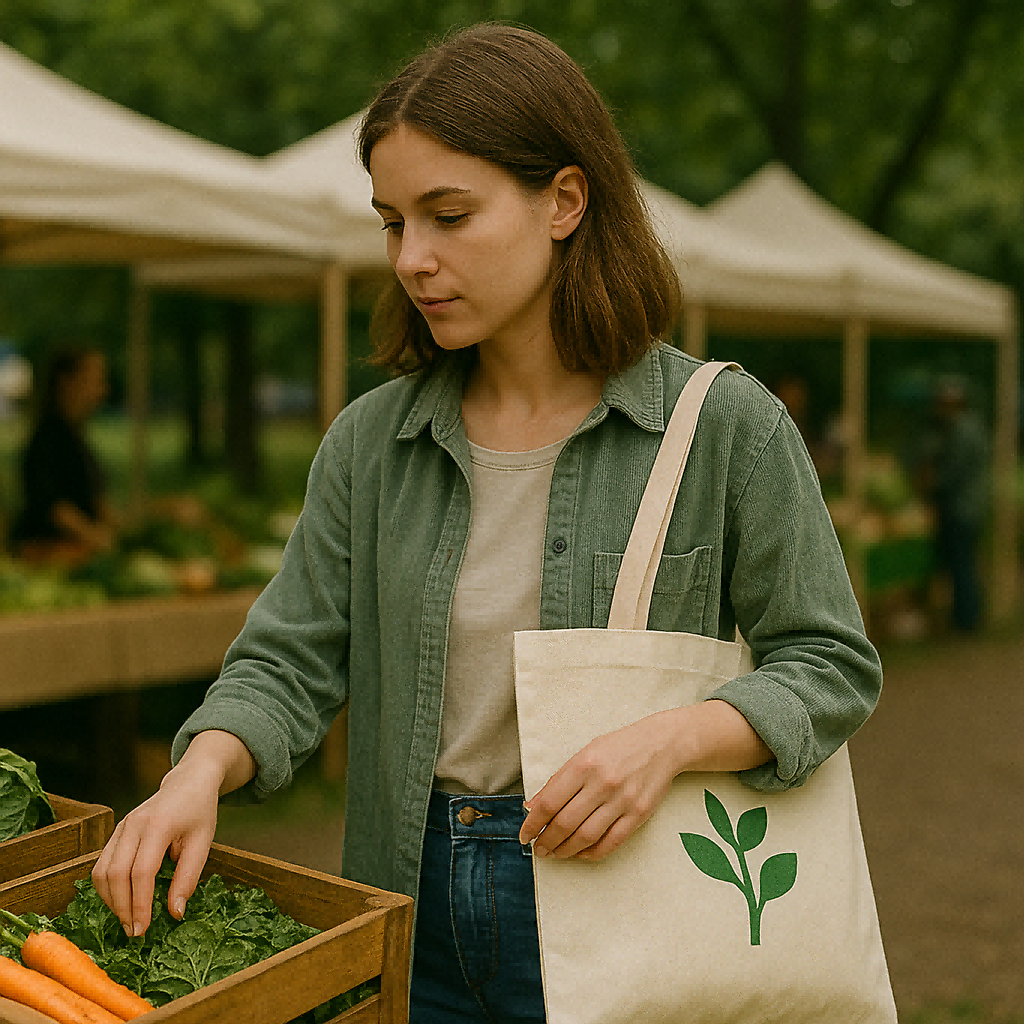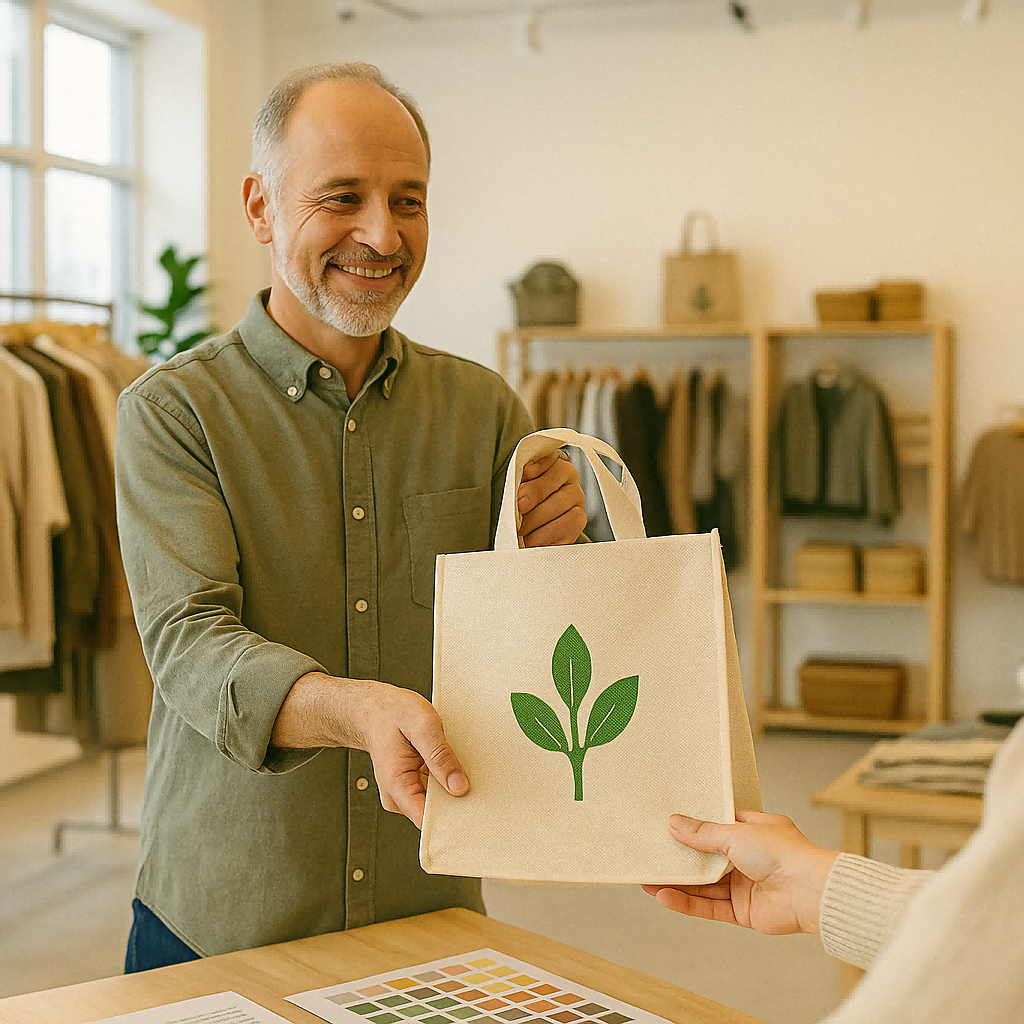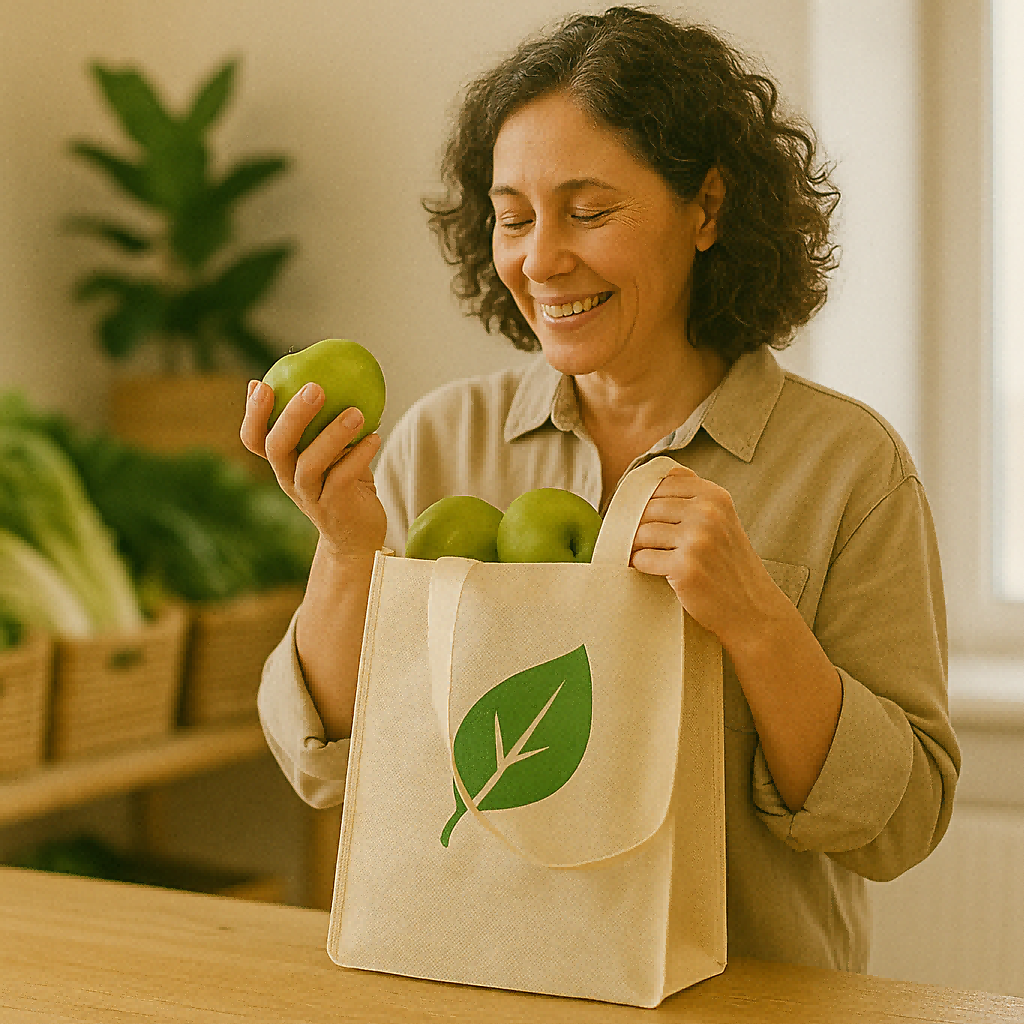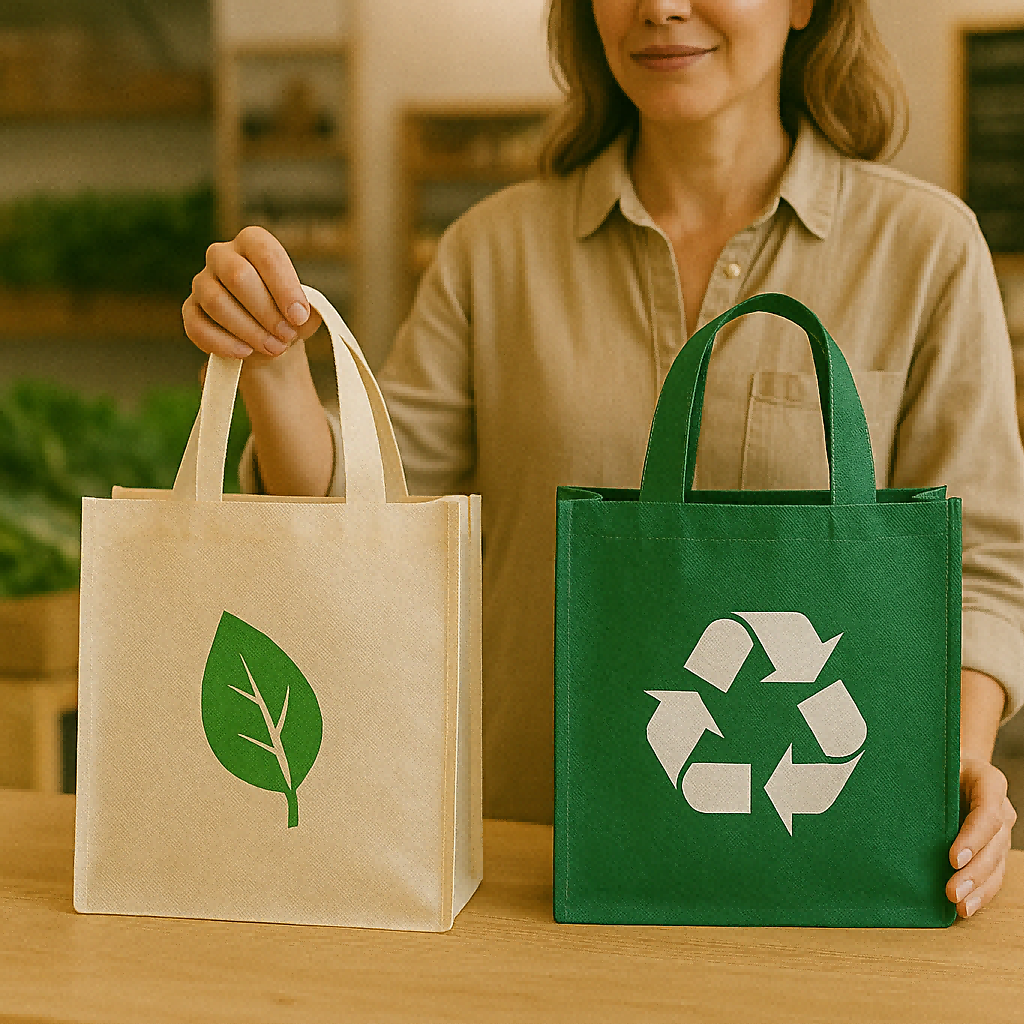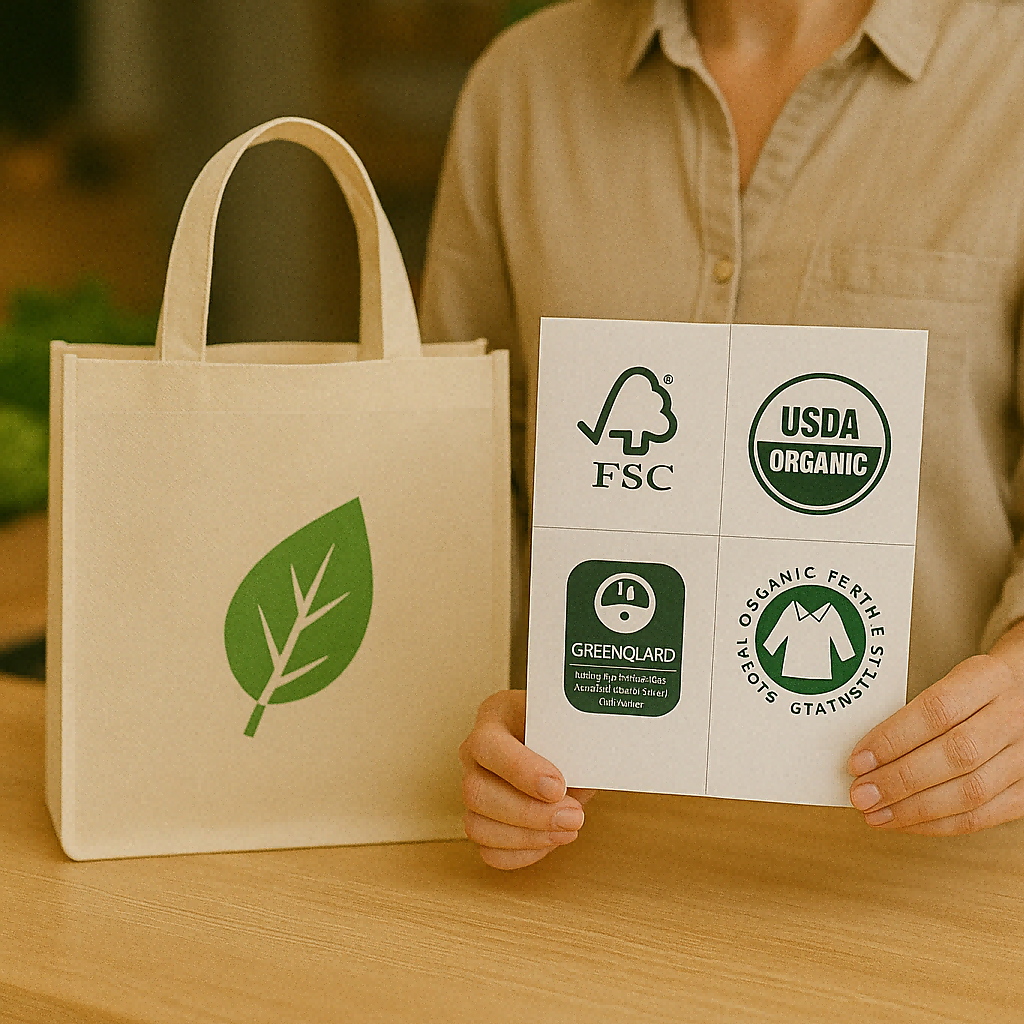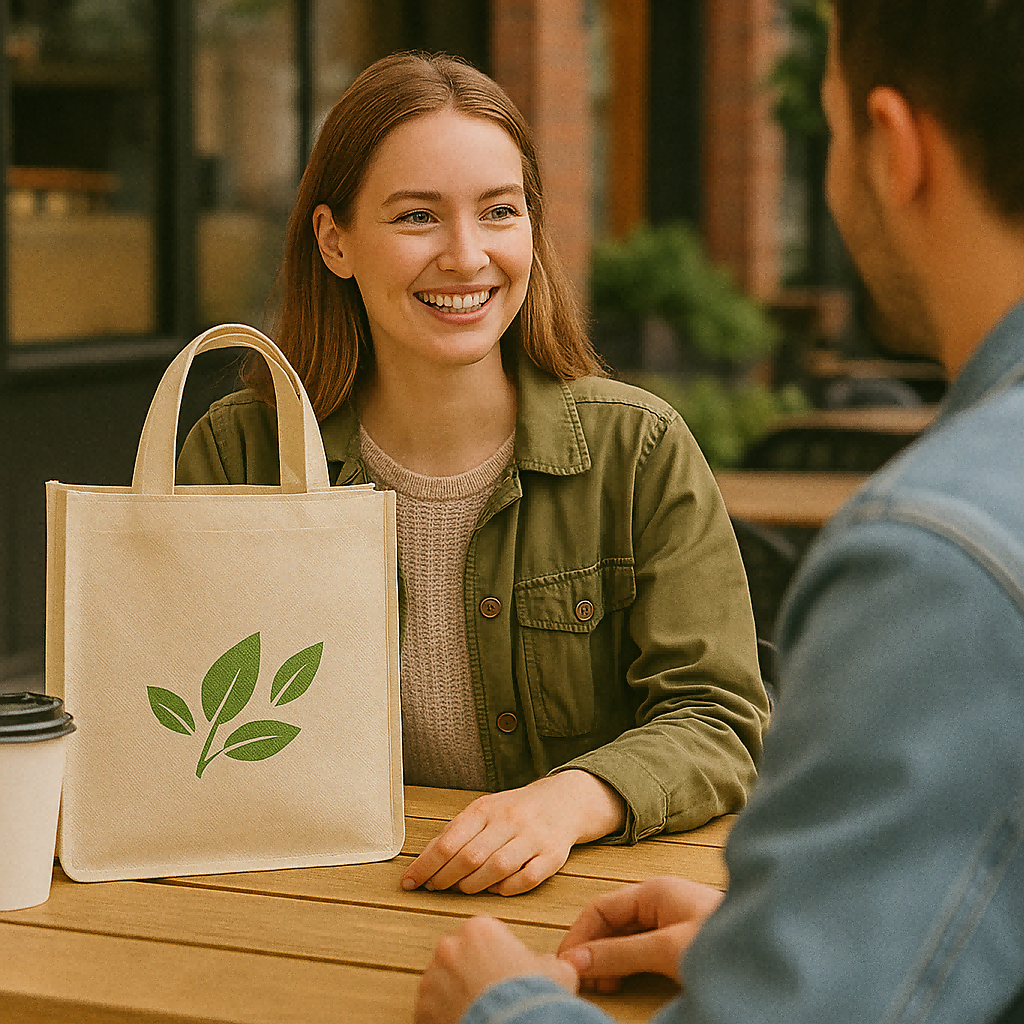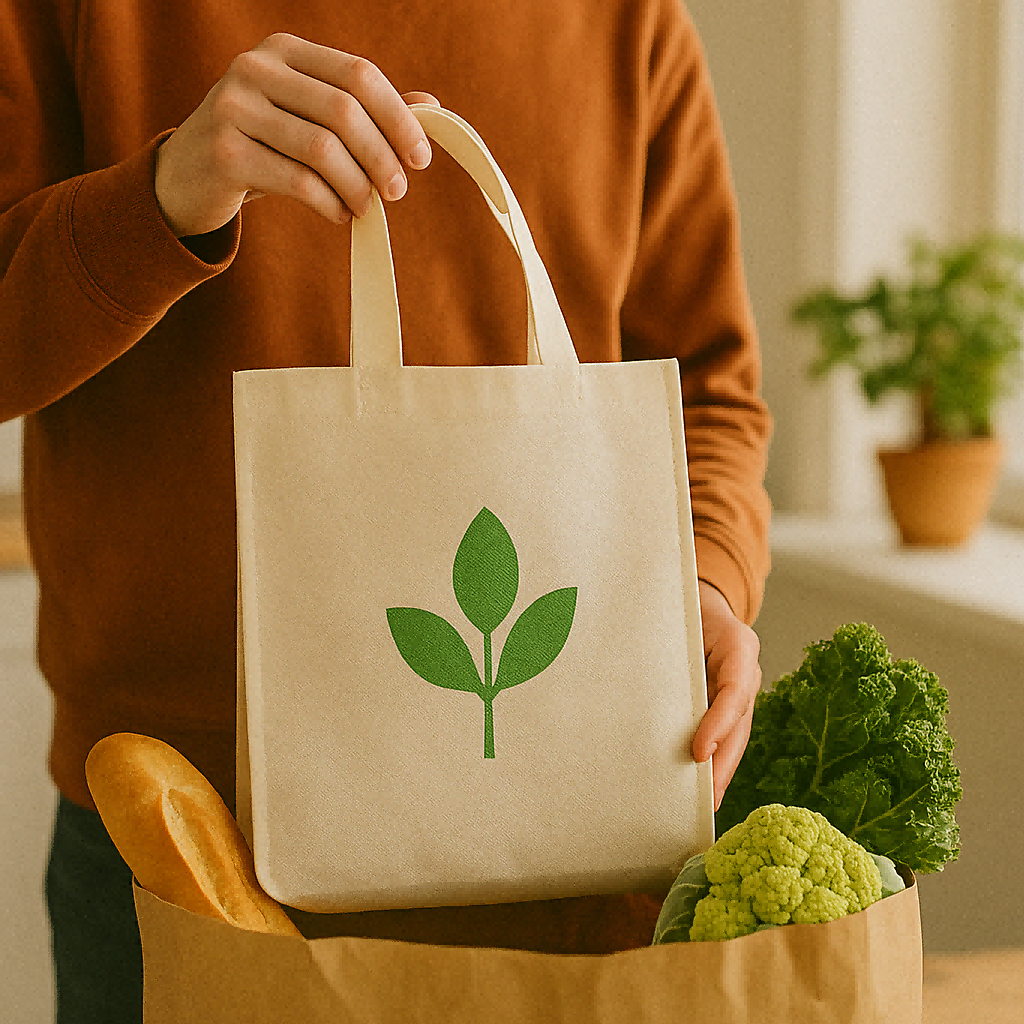Brand giveaways often end up as clutter—eco-friendly totes solve that problem while telling a story your customers care about.
Eco-friendly non-woven tote bags1 are sustainable, customizable, and ideal for modern promotional strategies. They help businesses connect with eco-conscious buyers effectively.
If your brand wants visibility and credibility, switching to eco totes is a smart and simple move.
The Rise of Sustainable Promotions: Why Buyers Prefer Green?
Traditional promotions often feel wasteful—green marketing offers both emotional and environmental value.
Eco-conscious promotions resonate with consumers, offering long-term brand benefits and alignment with growing sustainability trends2.
What’s Changing in Buyer Behavior?
Consumers today don’t just want a product—they want meaning. As environmental awareness increases, many buyers scrutinize how companies promote themselves. Eco-friendly giveaways, especially bags, are seen as reflections of a brand’s values. When a customer receives a reusable tote instead of a disposable flyer, it makes an impression—they see your brand as forward-thinking and responsible.
Events, tradeshows, and even retail counters are key opportunities where a sustainable bag can serve both as a branding tool and a practical takeaway. It's not just about being green; it’s about being seen.
| Trend | Buyer Reaction |
|---|---|
| Plastic reduction | Increased loyalty |
| Eco packaging | Perceived as premium |
| Sustainability claims | Demand for verification |
Custom Tote Bags with Water-Based Inks3: A Smarter Printing Choice?
Toxic inks undermine eco branding—water-based inks offer safer, cleaner, and better print quality.
Water-based inks produce vibrant prints while minimizing environmental and health hazards during manufacturing.
Why Ink Choice Matters
Beyond environmental benefits, water-based inks also support compliance with international safety regulations4. For brands selling in Europe, for example, avoiding inks with harmful residues is essential to meet REACH compliance. These inks also have a soft hand feel—making bags more pleasant to touch, adding perceived value without additional cost.
For high-volume orders, the switch to water-based inks can reduce emissions during the production process. Brands who promote this choice on the packaging often receive better feedback from customers and even media mentions.
| Type | Features | Eco Impact |
|---|---|---|
| Solvent Inks | Harsh chemicals | High |
| Water-Based | Non-toxic | Low |
| UV Inks | Durable, costly | Medium |
Turn Free Eco Totes into High-Impact Brand Giveaways?
Giveaways often go unnoticed—customized totes with practical value are different.
Free non-woven totes5 offer continued exposure and real utility, making them more valuable than standard promotional items.
Why Free Isn’t Cheap
Many brands fail by treating giveaways as afterthoughts. Instead, when you create limited edition eco totes or collaborate with local artists to print seasonal designs, customers treat them like collectibles. Use your bags to tell a story—whether it's about how the bag was made or how to reuse it creatively.
Also consider QR codes printed on the tote that link to a landing page or video about your brand's green mission—turning a simple gift into an engagement tool.
| Element | Advantage |
|---|---|
| Unique shape | High visibility |
| Durable material | Extended usage |
| Creative slogans | Share-worthy |
Top Eco Design Features That Attract Today’s Shoppers?
Modern shoppers want form and function—they also expect sustainability to be visible.
Today’s buyers prefer tote bags that reflect modern design and transparent eco-friendly materials.
Which Features Work Best?
Design is no longer just about aesthetics—it's about signaling values. Embossed or printed eco labels, hangtags with recycling information, and stitched logos on durable fabrics all serve this purpose.
If your target market includes health or wellness-focused customers, minimalist and natural-toned bags with organic materials resonate deeply. Bright, bold colors may work better for promotional campaigns or youth-targeted events.
| Feature | Shopper Benefit |
|---|---|
| RPET lining | Waterproof, recycled |
| Organic colors | Natural look |
| Reinforced handles | Stronger hold |
Reusing Polypropylene Bags: Eco-Friendly and Cost-Effective?
Single-use bags are wasteful—polypropylene bags offer a repeat-use solution for both brands and users.
Non-woven polypropylene (NWPP)6 bags provide excellent durability and branding potential with lower environmental impact.
Why NWPP Makes Sense
Besides their green profile, NWPP bags can be stored flat, reducing shipping and warehousing costs. For importers or distributors, this flexibility saves on logistics expenses.
They’re also ideal for creating seasonal bag lines—easy to dye, easy to cut, and great for screen printing. For brand managers, this means they can run quick limited-edition releases with minimal waste.
| Factor | NWPP Bag |
|---|---|
| Cost | Affordable |
| Reuse Cycles | 100+ uses |
| Custom Print | Easy, vibrant |
Non-Woven vs. Recycled PET Totes: What’s Right for Your Brand?
Not all eco bags are the same—understand which fits your goals better.
Non-woven bags are budget-friendly and versatile; RPET totes7 are premium, made from recycled plastic bottles.
Material Decision Guide
While NWPP bags are lightweight and cost-effective for high-volume promotions, RPET totes speak louder when your goal is to align with environmental leadership. For example, RPET’s story—from plastic bottle to bag—can be included in packaging to educate consumers and build stronger emotional attachment.
Some brands even offer “choose your material” options online, letting customers select between RPET and NWPP—this level of transparency fosters trust and personalization.
| Material | Look | Feel | Target Use |
|---|---|---|---|
| NWPP | Matte | Soft | Mass promotions |
| RPET | Glossy | Smooth | Retail & gifting |
Eco Certifications That Matter to Smart Buyers?
Eco claims without proof won’t work—certifications offer the assurance buyers want.
Key certifications like GRS, REACH, and BSCI show your commitment to safe, ethical, and sustainable production.
What Buyers Look For
For large-scale buyers—especially supermarket chains or global brands—these certifications aren’t optional. Without GRS, they won’t accept recycled claims. Without REACH, your products might be barred from EU markets. And BSCI is a must for social compliance.
Certifications also give you a competitive edge on platforms like Alibaba or at international trade fairs.
| Certification | What It Proves |
|---|---|
| GRS | Recycled material verified |
| REACH | Chemical safety compliance |
| BSCI | Social responsibility audit |
How Real Brands Use Eco Totes to Win Customers?
Examples prove the power of practice—brands using eco totes see real results.
Eco totes have helped brands boost customer engagement, drive referrals, and promote loyalty through green visibility.
Real Brand Wins
One wellness brand added seed packets to every tote and encouraged planting via a social campaign—followers tripled. A café chain gave tote bags as gifts with large orders, then spotted their branding on subways and campuses for months.
Brand visibility isn't just about impressions; it's about usefulness. A tote used 50 times is worth more than a banner seen once.
| Brand | Strategy | Result |
|---|---|---|
| Retail | Loyalty gift | More visits |
| Gym | Referral gift | More signups |
| Café | Gift with order | Street exposure |
Designing Totes That Speak Sustainability?
Good design communicates without words—eco messaging can be built into every detail.
Use symbols, minimalist fonts, and soft colors to visually reinforce your sustainability message on totes.
Green by Design
Think beyond logos. Use subtle taglines like "Reuse Me" or “I Used to Be a Bottle.” Let the texture tell a story—rough weaves suggest authenticity; sleek textures suggest innovation. You don’t need big designs to make a big impression.
Use side panels to print QR codes or short environmental tips. These design choices create micro-interactions that enhance the user's sense of connection.
| Design Choice | Sustainable Benefit |
|---|---|
| Soft palette | Low-impact dyes |
| RPET or NWPP tag | Educates customers |
| Recycled look | Visual storytelling |
Drive Brand Loyalty with Sustainable Packaging Choices?
Tossed packaging has no value—reusable totes become part of your customer’s lifestyle.
Switching to reusable totes for packaging creates daily reminders of your brand and values.
A Better Unboxing Experience
Instead of traditional packaging, imagine delivering your product inside a stylish tote. This not only reduces waste but makes the unboxing feel premium. You can even encourage customers to share their “eco-unboxing” on social media for added visibility.
Retailers can create packaging that doubles as merchandise—bags that carry groceries today and yoga gear tomorrow.
| Element | Loyalty Impact |
|---|---|
| Reusable bag | Continued exposure |
| Eco story card | Emotional connection |
| Functional design | Higher reuse rate |
Conclusion
Eco totes combine branding, sustainability, and daily function to make your message stick and your brand stand out.
-
Explore how non-woven eco totes enhance branding while supporting environmental goals. ↩
-
Learn why sustainable practices are increasingly influencing purchasing decisions. ↩
-
Discover how water-based inks improve print quality and sustainability. ↩
-
Understand the global standards eco products must meet, including REACH. ↩
-
See how custom giveaways turn into long-term brand exposure. ↩
-
Learn why NWPP bags provide a cost-effective reusable solution for brands. ↩
-
See how RPET bags elevate brand image with premium recycled materials. ↩

